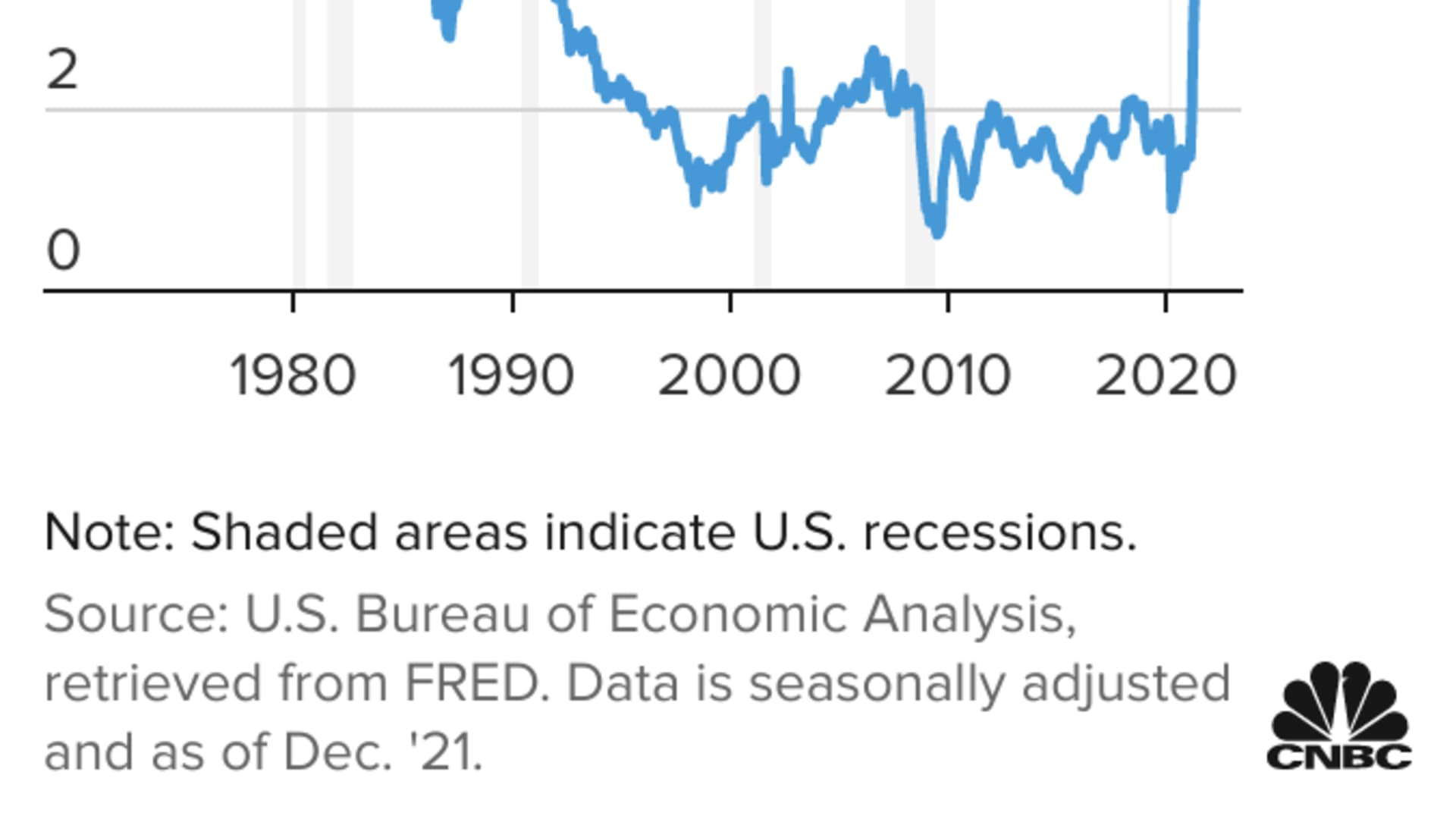
- The core personal consumption expenditures price index, a closely watched inflation gauge at the Federal Reserve, rose 4.9% from a year ago in December.
- That was the fastest gain since September 1983 and a touch above the Wall Street estimate.
- Employment costs increased 4% from a year ago, the fastest in the 20-year data history, though the quarterly rise of 1% was less than expected.
A gauge the Federal Reserve prefers to measure inflation rose 4.9% from a year ago, the biggest gain going back to September 1983, the Commerce Department reported Friday.
The core personal consumption expenditures price index excluding food and energy was slightly more than the 4.8% Dow Jones estimate and ahead of the 4.7% pace in November. The monthly gain of 0.5% was in line with expectations.
Feeling out of the loop? We'll catch you up on the Chicago news you need to know. Sign up for the weekly Chicago Catch-Up newsletter here.

Along with the inflation numbers, personal income rose 0.3% for the month, a touch lower than the 0.4% estimate. Consumer spending declined 0.6%, less than the 0.7% estimate.
A separate Labor Department data point that Fed officials also watch closely showed that total compensation costs for civilian workers increased 4% over the past 12 months. That is the fastest pace in history for the employment cost index, a data set that goes back to the beginning of 2002.
Money Report
However, the seasonally adjusted quarterly increase of 1% was less than the 1.2% forecast, putting some balm on fears of a wage price inflationary spiral.
The numbers come as rampant inflation is pushing the Fed into an aggressive pace of policy tightening.
Earlier this week, central bank officials indicated they are likely to begin raising interest rates as soon as March. Market pricing is pointing to five quarter-percentage point increases this year for benchmark short-term borrowing rates, which have been anchored near zero since the beginning of the Covid pandemic in early 2020.
Headline inflation rose at a 5.8% pace as measured by the PCE index, tied for the fastest pace since June 1982.
Markets viewed the data releases as positive, with stock market futures well off their morning lows.
Fed officials are worried about inflation pressures they had characterized through much of last year as "transitory." While factors tied to the supply chain bottlenecks and powerful demand for goods over services have been a core cause of price increases, inflation has proven stronger and longer lasting than policymakers had figured.
One area of specific concern is wages and the possibility of a spiral where increases in pay push up prices and in turn drive inflation expectations higher.
"One quarter's data prove nothing, but with labor participation creeping higher, and measures of excess demand flattening in recent months, it is reasonable to think that wage growth is unlikely to re-accelerate dramatically," wrote Ian Shepherdson, chief economist at Pantheon Macroeconomics. "In the meantime, this report eases the immediate pressure on the [Federal Open Market Committee] to act aggressively; the sighs of relief from Fed Towers should be audible on Wall Street."
The 4% employment cost index annual increase, though missing estimates for the quarter and below the 1.3% gain from the previous quarter, still represented a sharp gain from the 2.5% rise from a year ago. Compensation for private industry workers jumped 4.4%, which included a 5% increase in wages and salaries. Benefits costs rose 2.9%.
Compensation grew fastest for service occupations, which saw a 6.1% surge in 2021. Nursing and residential care compensation increased 5.7%.
Despite the gain in wages, consumer spending tailed off, falling 0.6% after gaining 0.4% in November.
The decline in spending came despite a 6.9% increase in gross domestic product in the fourth quarter, which closed out a year in which the economy accelerated at its fastest pace since 1984.






